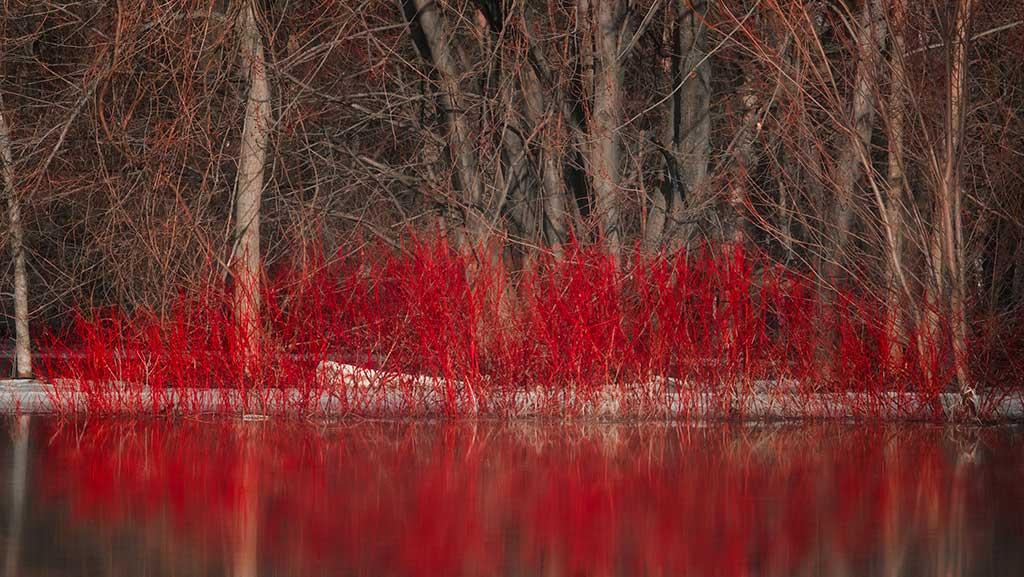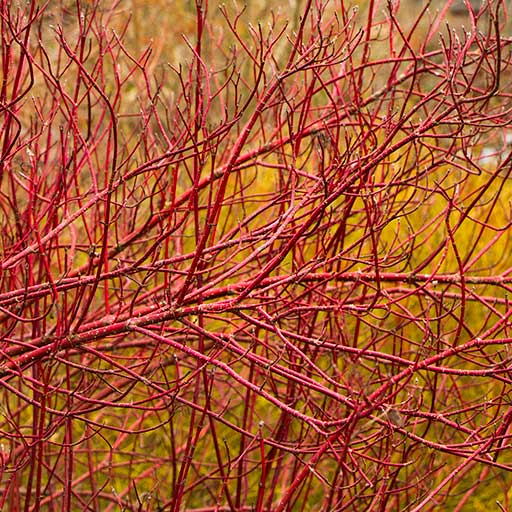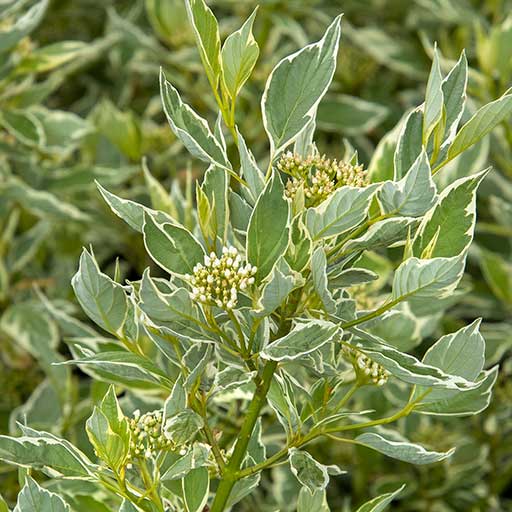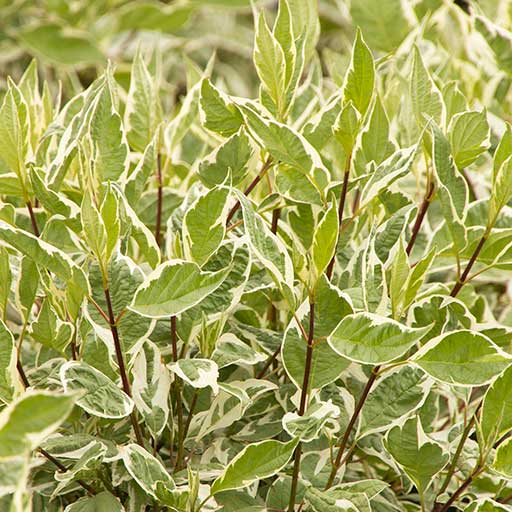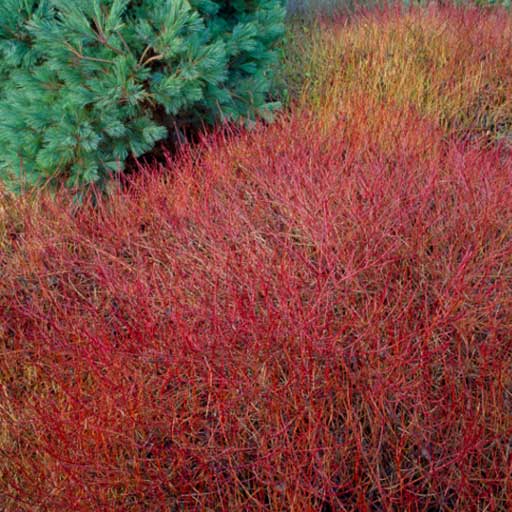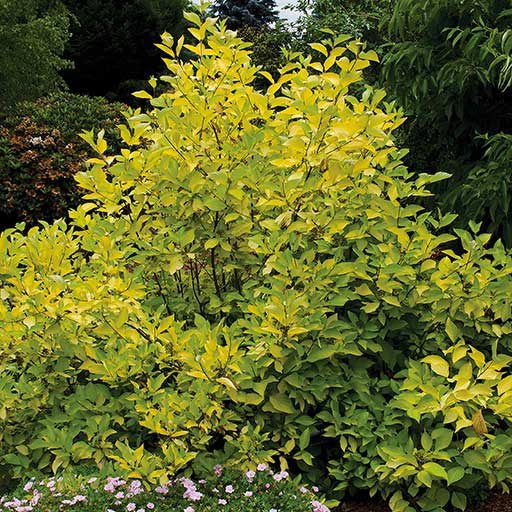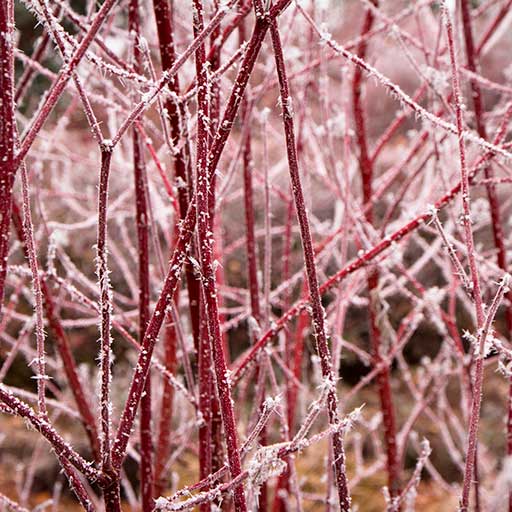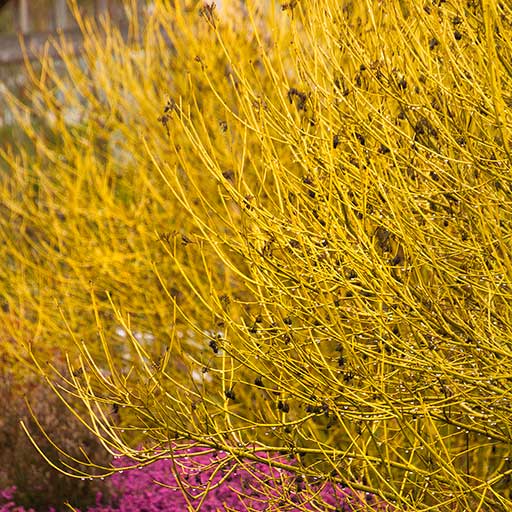Come November, many of us have already seen the season's first snow. October's glorious show of color has faded, or fallen, and the veil of winter draws across the Northern Hemisphere.
But as their leaves drop, our good friends, the Dogwood shrubs bare their beautiful branches. Their striking shades of red, orange, and yellow are the perfect pop amidst November's humble browns.
GET THE LOOK: Grow a grove of Red Twig Dogwood along a woodland or water’s edge. The bigger the grove, the bigger the impact.
PHOTO: Getty
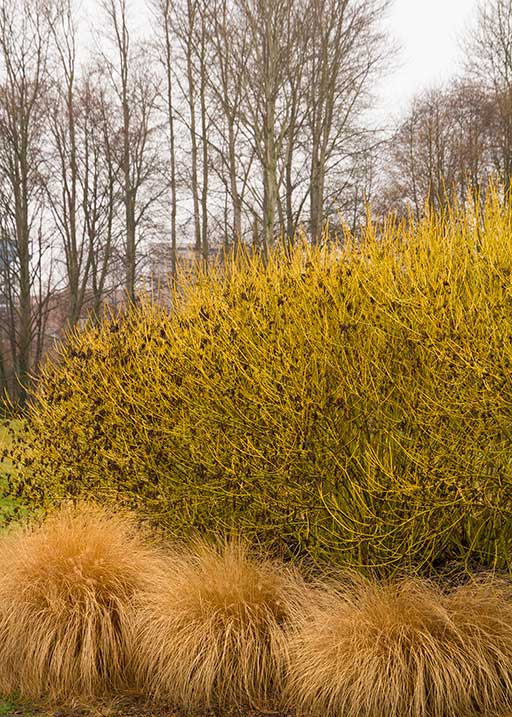
Grow a similar look: Yellow Twig Dogwood and Dwarf Fountain Grass
Photo: Doreen Wynja
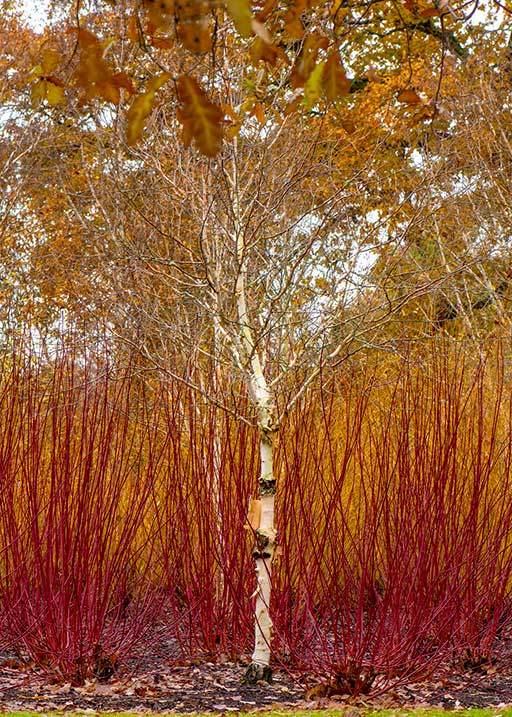
Grow a similar look: Variegated Red Twig Dogwood and Whitebarked Himalayan Birch
Photo: Getty Images
Grow Dogwoods to brighten your winter landscape
Grow Dogwood shrubs to bring bold color into your late autumn and winter garden. Versatile in the landscape and easy to grow, Dogwood colors and forms are sure to brighten your landscape. (And those hits of color can also brighten your mood.)
Design tips for planting Dogwood shrubs
- Plant one Dogwood in your small space for uplifting color. At just 3' – 4' tall and wide. Artic Fire® Red Twig Dogwood is a great choice.
- Group them in a border or use them to naturalize an area where they can wow you en masse. Prairie Fire Dogwood is especially striking.
- Interplant yellows and chartreuse to create a harmonious sense of rhythm or music. Try Yellow Twig Dogwood and Crème De Mint™ Dogwood.
- Plant Dogwoods in front of an evergreen backdrop or at the edge of the water to amplify their impact. Plant red and yellow side by side for even more drama.
- Help control erosion by planting Dogwood shrubs along a creek or hillside. Bonus: Many Dogwoods will tolerate road salt runoff, as well.
Grow our favorite Dogwood shrubs
Shorter, more compact dark red stems put on a spectacular show in the winter sunlight. Unlike most Cornus that reach 8' – 10' tall, Arctic Fire grows to only half the height. It tops out at 3' – 4' tall and wide. This makes it ideal for small space borders.
Plant near your porch or patio for easy cutting and add branches to your holiday arrangements. Deciduous.
Cornus stolonifera 'Farrow'
3' – 4' tall and wide
Partial to full sun
Zone 3 – 7
In fall, mint green and cream variegated leaves tint toward a pink or red tinge. Compact and densely branched, its chartreuse stems delight novice gardeners. As well as plant collectors looking for unusual beauty in the fall and winter landscape.
To encourage vibrant stems, hard prune one-third of oldest stems every year in late winter or early. Stem color is best in full sun. Deciduous.
Cornus alba 'Crmizam'
4' – 5' tall and wide
Partial to full sun
Zone 3 – 8
Burnished red winter stems rise from this compact shrub in fall and winter. Showy, light green leaves with creamy white margins flutter atop branches in spring and summer.
Gardeners love it in small spaces since it's only two-thirds the size of many other Cornus. Use it for multi-season interest in shrub borders, mass plantings, or as a low hedge. Excellent near wet areas like natural ponds and pools.Deciduous.
Cornus alba 'Bailhalo'
5' – 6' tall and wide
Partial to full sun
Zone 3 – 7
Kelsey's Dwarf Red-Osier Dogwood
Bare red stems appear on this low-growing, compact shrub in winter, providing high-impact color. Compared to most Cornus, this variety is almost tiny, topping out at just 30' tall and wide. Excellent in the smallest of spaces, its low, mounded form flushes with lush green color in spring and summer.
Plant in front of taller grass or an evergreen hedgerow for contrasting high-low beauty. Deciduous.
Cornus sericea 'Kelseyi'
24" – 30' tall and wide
Partial to full sun
Zone 2 – 8
Brilliant red fall foliage drops to reveals flaming orange-red stems for high impact winter drama. Unusually bright golden foliage fades to a soft yellow in summer. Creamy white spring flowers yield ornamental berries in midsummer.
Versatile and fast-growing, Prairie is an unusual specimen in the landscape, and can add beautiful color in all four seasons. Deciduous.
Cornus alba 'Prairie Fire'
Up to 7' tall and wide
Partial to full sun
Zone 2 – 7
New growth delivers outstanding coral-red, multi-stemmed branches. Keep the color coming when you hard prune one-third of the oldest stems annually in late winter.
Bare stems are an attractive winter accent. Meanwhile, in spring, yellowish-white flowers emerge atop rich green leaves. Flowers are followed by small blueberries beloved by birds. Plant with companions that need summer water. Deciduous.
Cornus alba 'Sibirica'
Up to 9' tall, 5' wide
Partial to full sun
Zone 2 – 8
Stunning fall color and brilliant red stems put on an elegant show in winter. In spring and summer, variegated leaves fill out with attractive white berries that often tint into blue or green.
This vigorous shrub is ideal when you want to naturalize a slope or border, especially near a wooded area. It forms a thornless thicket of upright, cherry red stems. Best color in full sun. Deciduous.
Cornus alba 'Elegantissima'
6' – 8' tall, 4' – 6' wide
Partial to full sun
Zone 2 – 8
Bright yellow stems on the younger growth of this multi-stemmed shrub glow in your late fall and winter border. In spring, white flower clusters adorn the green foliage, then form white ornamental fruit.
To ensure vibrant stem color, prune out older, thicker stems at the base of the shrub in late winter. This makes room for spring's new growth and another season of color. Excellent in wet areas and for erosion control. Deciduous.
Cornus sericea 'Flaviramea'
6' – 8' tall, 7' – 9' wide
Partial to full sun
Zone 2 – 8
When to prune Dogwoods for the best color
In most cases, your Dogwoods will keep vibrant stems coming when you prune out old wood. In fact, the best stem color appears on your young wood. So, to encourage bright red, orange, yellow, or chartreuse stems, hard prune one-third of oldest stems every year. Try doing so in late winter or early spring.





